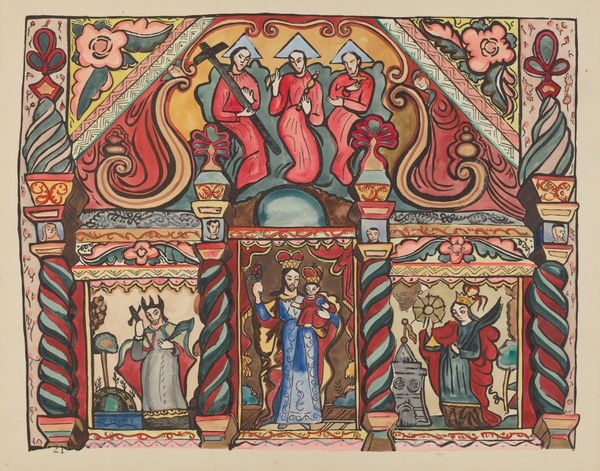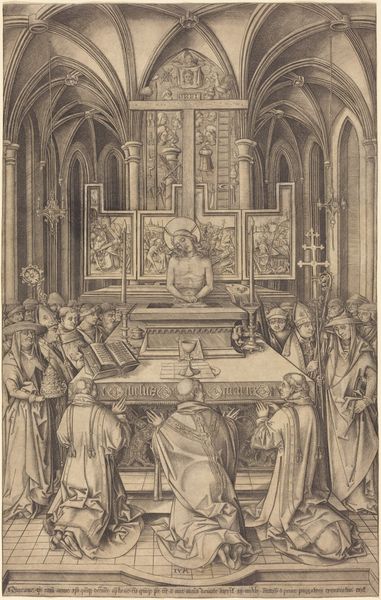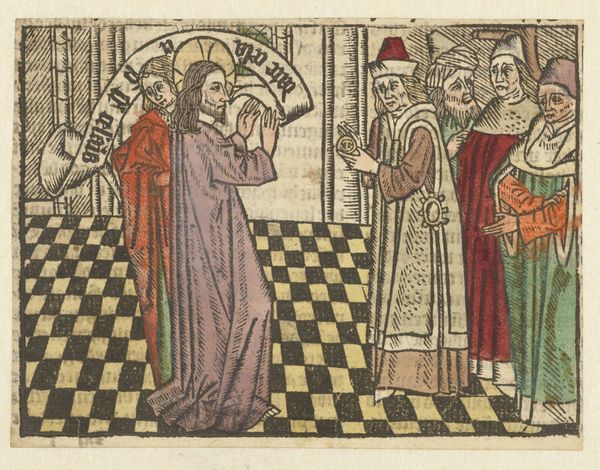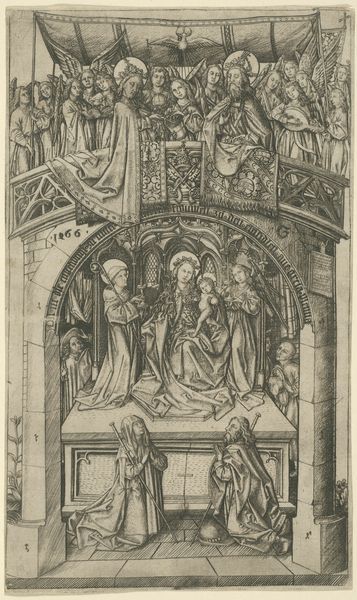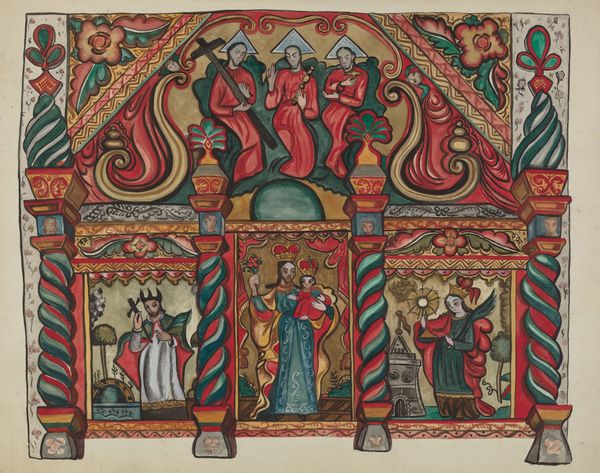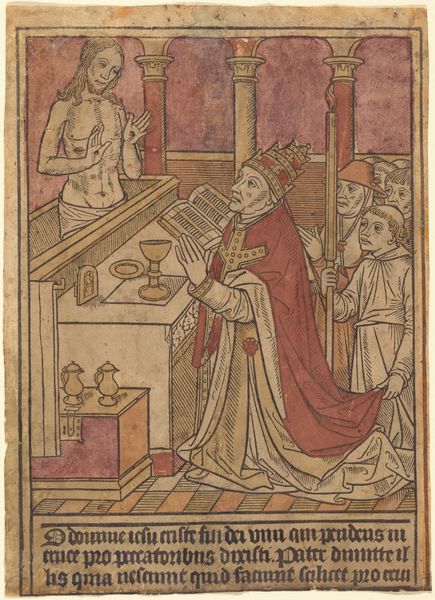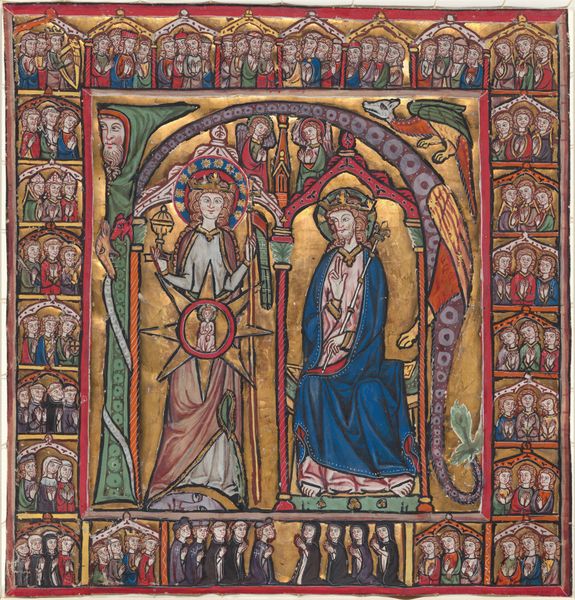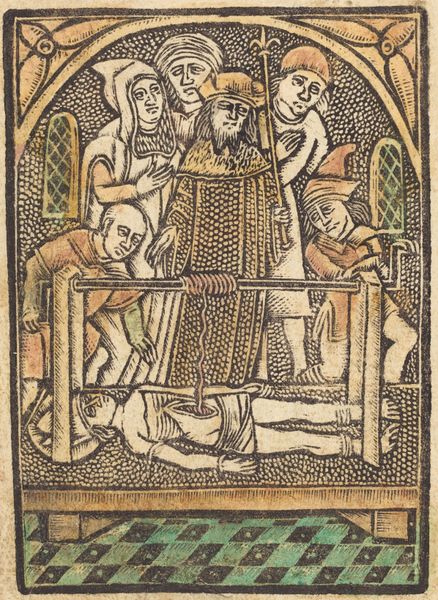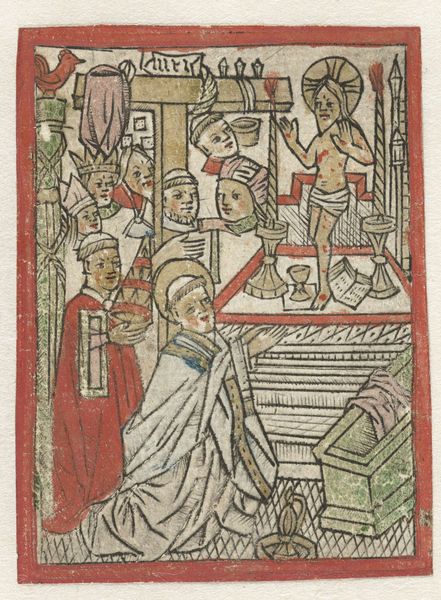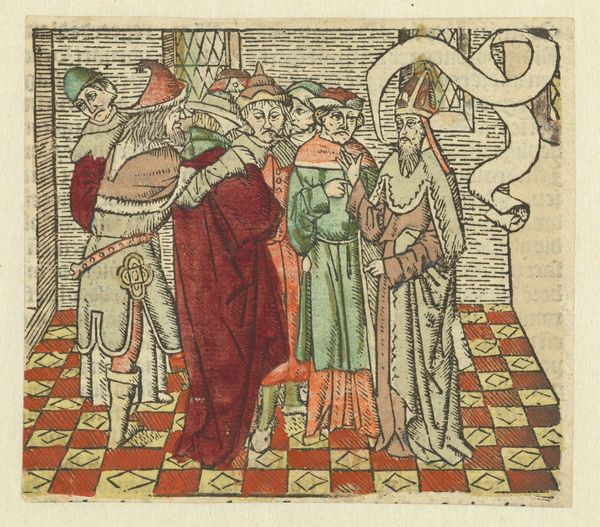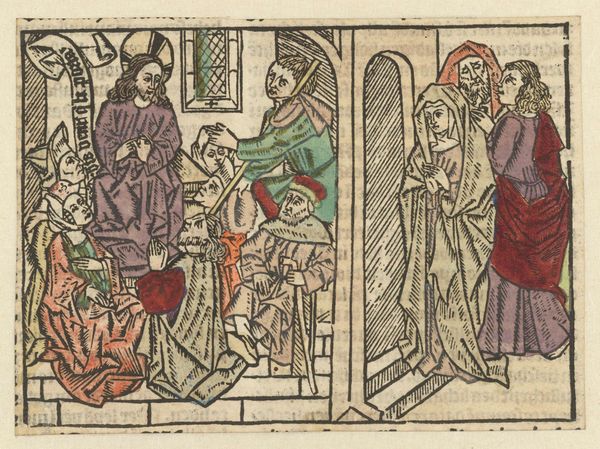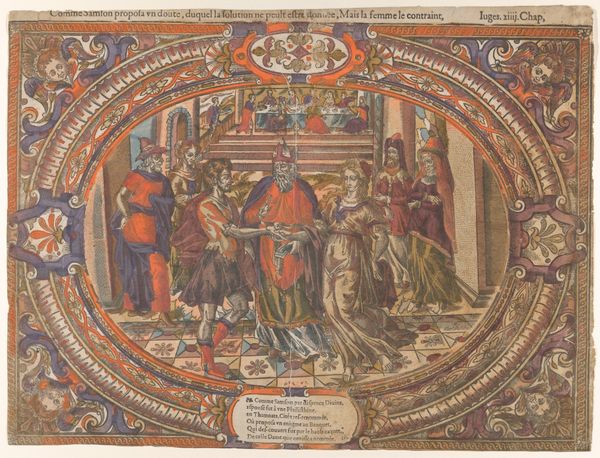
print, woodcut
#
medieval
#
narrative-art
# print
#
woodcut
#
genre-painting
#
northern-renaissance
Copyright: National Gallery of Art: CC0 1.0
Curator: This print, titled "Miracle at Seefeld", dates back to 1484, a woodcut created by an anonymous artist. The piece encapsulates a powerful narrative within the Northern Renaissance style. Editor: It feels both intimate and grand simultaneously. The lines are so crisp, even with what appears to be hand-coloring, there’s a vibrancy here that draws me in. It’s striking how accessible this likely would have been at the time. Curator: That’s insightful. Woodcuts such as this played a critical role in disseminating religious narratives, especially in regions where access to more expensive art forms was limited. The medium democratized imagery, engaging a broader public. The Miracle depicted is a significant story in the area of Seefeld's cultural history and pilgrimage. Editor: Thinking about accessibility also leads to pondering how the audience might have intersected with those ideas in daily life—gendered expectations in terms of performing penitence, the pressure of being a "believer." Curator: Absolutely, religious artwork frequently served as an ideological tool, reflecting and reinforcing prevailing social norms. In the composition you can clearly see different clusters of people reacting to the events as a statement of community building through faith. The subject brings an understanding to the history of local devotional practices. Editor: It's this intersection where the aesthetic meets the socio-political that makes it very fascinating to study and, importantly, question today. The power dynamic is blatant in the scene as those in costumes kneel while others give. But it does seem so strange that an “anonymous artist” from so long ago still asks these questions about agency. Curator: Agreed, "Miracle at Seefeld" can be understood within the development of printmaking techniques that would eventually revolutionize visual culture. Editor: Looking at it now makes me think more broadly about the democratization of faith, then, compared to say the rise of digital spiritual influencers on social media today— how those with privilege are positioned differently across time. Curator: It highlights both the enduring power of images and their constant reinterpretation. Editor: The "Miracle at Seefeld," even centuries later, challenges our understandings of history, belief, and agency.
Comments
No comments
Be the first to comment and join the conversation on the ultimate creative platform.
